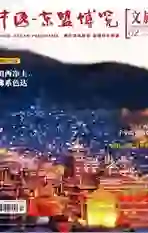The Korean Ethnic Group: Immigrants From the Korean Peninsula ●By Mo Tingitng
2019-09-25
The ancestors of the Korean ethnic group in China migrated from the Korean peninsula from about the late 17th century. Most of them were peasants fleeing from their oppressive feudal landlords. Especially following a severe famine in the northern part of Korea in 1869, they settled down in large numbers in what is now the Yanbian area in eastern Jilin Province, a beautiful, majestic land of high mountains and deep valleys. Another community of the Korean Chinese is the Changbai Korean Autonomous County in southeastern Jilin, one of Chinas major sources of timber and forest products, and a habitat for many wild animals.
Living habits of the Korean ethnic group
The Korean people pay particular attention to house building. They chose to build their houses near mountains and by rivers, and the houses usually face the sun and sit against the wind. Traditional Korean houses are featured by big roofs covered with black tiles, white walls and latticed windows, looking neat and cozy. There are generally two types of houses: tile-roofed house and thatched cottage, but the later is seldom found now. Inside the house, the heated brick bed, which occupies about 2/3 of the total area of the house, is one of the distinctive features of Korean houses. Moreover, the “ten longevity”, namely sea, mountain, water, rock, pine, tortoise, crane and deer etc, are often used as images in paintings and screens to decorate the house, symbolizing long life.
Korean food has been spread all over China and even around the world, serving as a messenger connecting the Korean people with the whole world. Traditional Korean cuisine is very spicy, and the most famous ones include pickled vegetable, cold noodles, dog meat and sticky rice cake.
Pickled vegetable is favored by the Korean people. It is usually made in winter, and the main ingredients are cabbage and carrots which are spiced with garlic, capsicums, gingers, salt etc. Cold-noodles are a traditional cooked wheaten food of the Korean people. It is made of buckwheat, wheat-flour and amylum. Complemented with beef, chicken, capsicum and seasonings, the cold-noodles taste quite delicious. Dog meat is the most popular meat dish. The Koreans have some international fame for their unusual cooking of dog-meat. Most foreign visitors to Yanbian are very interested in this dish. Even today, Korean people continue their tradition of treating their guests to a “Dog Meat Banquet”. However, killing and eating dog is forbidden during weddings, funerals or festival periods.
Traditional Korean costume is plain, light, and quietly elegant. At the very beginning, most of the Korean people live in the remote mountain areas, so linen and home-spun cloth were used to make clothes. And the color of white was their favorite, which stands for purity, kindness and sacredness; hence the Koreans got the name “people in white”. Nowadays, as silk has been introduced, more colors are used in clothes making. And the only thing remain unchanged is the style of the clothes featured by short jacket and long shirts.
Dances showing rejoicing
Korean Chinese are known as good singers and dancers nationwide. Korean dances, which include hat dance, long drum dance, and fan dance etc, are either elegant or bold vigorous.
According to the records, each year after the autumn harvest, a “sacrifice to heaven” was held by the ancient Koreans who dined, sang and danced all night long to express their gratitude for the god-send harvest. These dances are called the “happy harvest dance” and the hat dance is one of them.
As a traditional recreation, the hat dance enjoys a long history. The legend goes that the ancient Korean people tied the elephants hair on the hat top to get rid of beasts by swaying the elephant hair. It is also said to be a way to celebrate when the ancient hunters succeeded in hunting. Anyway, hat dance has developed into a folk art integrating music, dance and singing nowadays, and ribbons were used to replace elephants hair. The basic movement is swaying the hat, which is the unique feature of the dance. The performers sway their head by moving their neck. They sway and jump with complicated movements, and the ribbons on the hat would form a smooth moving circle, pleasing to the eye.
Mens wear often includes a white short buttonless frock with dark-colored sleeveless jacket outside. Their trousers are baggy with the trouser legs fastened with two cloth-straps at the ankles. Nowadays, most of the Korean men wear western-style clothes and their traditional costume is worn only on special occasions such as festivals or weddings.
Women usually wear short buttonless jackets and long skirts. Their jackets, about 35 centimeters long, are tied with a red, blue or purple ribbon. Their silk skirts have many folds at the waist. Young women often wear short skirts, which reach their knees, while the older women wear the longer skirts down to their instep. And their traditional dress is usually white, a symbol of simplicity and serenity.
The long drum is originated from the Song Dynasty (960-1279) of China and spread to the Korean peninsula later. It is a percussion instrument which looks like a cylinder with a solid middle part and two hollow ends. On festivals, Korean women dance while beating long drums. This is what they call the Long Drum Dance, a “shining pearl” of Korean dances.
The long drum dance is very elegant and graceful, and enjoys a history of over one thousand years. It is usually performed by women, who carry the long drum over their shoulder and hit the drum while dancing. The dance demonstrates peoples labor life, displays scenes of house building and drum making etc, and can be performed as solo dance or group dance.
